Life in Kolomyya, story 4
Tour by Jeff Austin, July-August 2019, part 3
We walked and drove around Kolomyia to take photos of the modern day city. We visited the former site of the Great Synagogue. It is now an open air farmer's market.
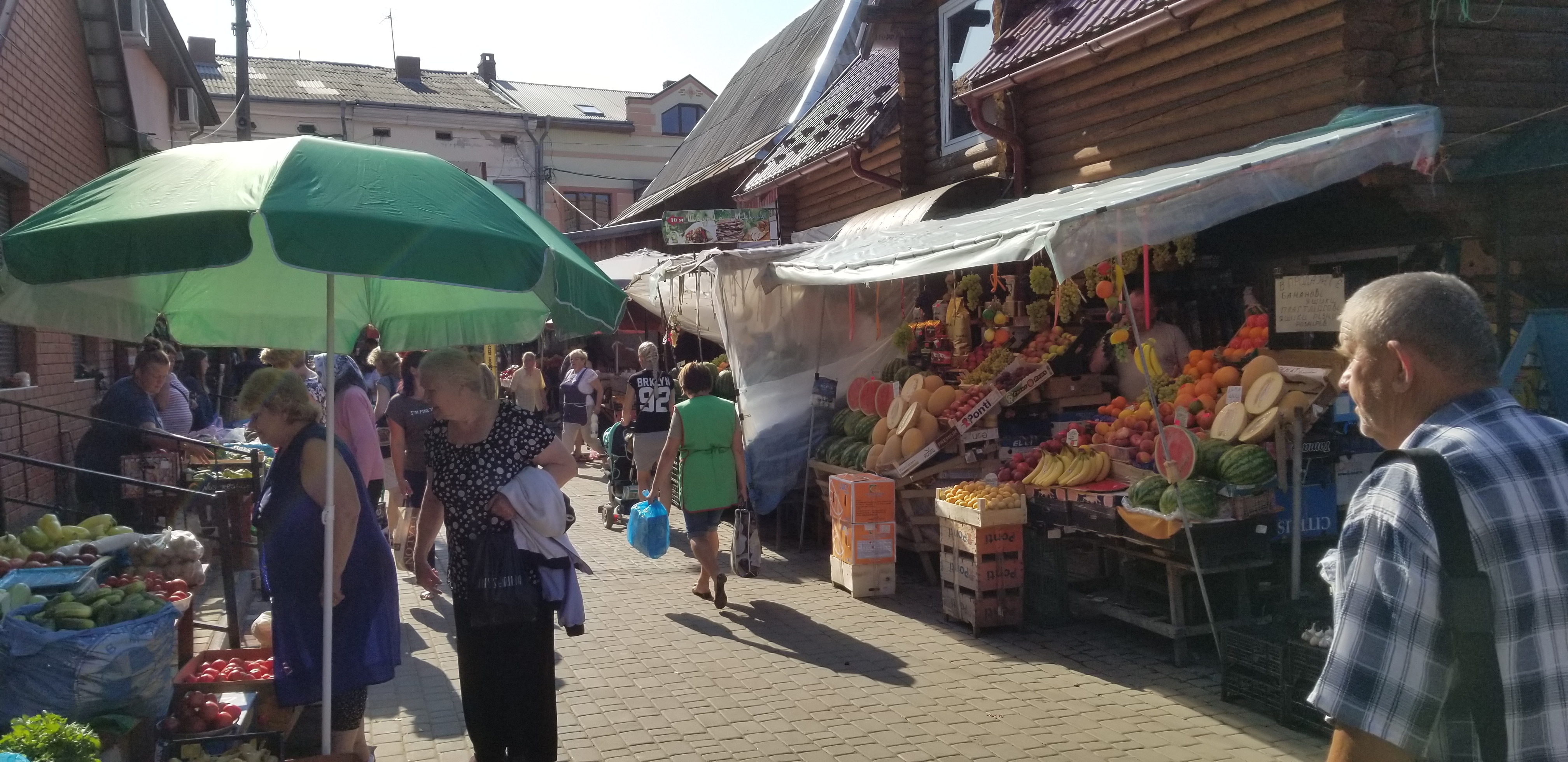 |
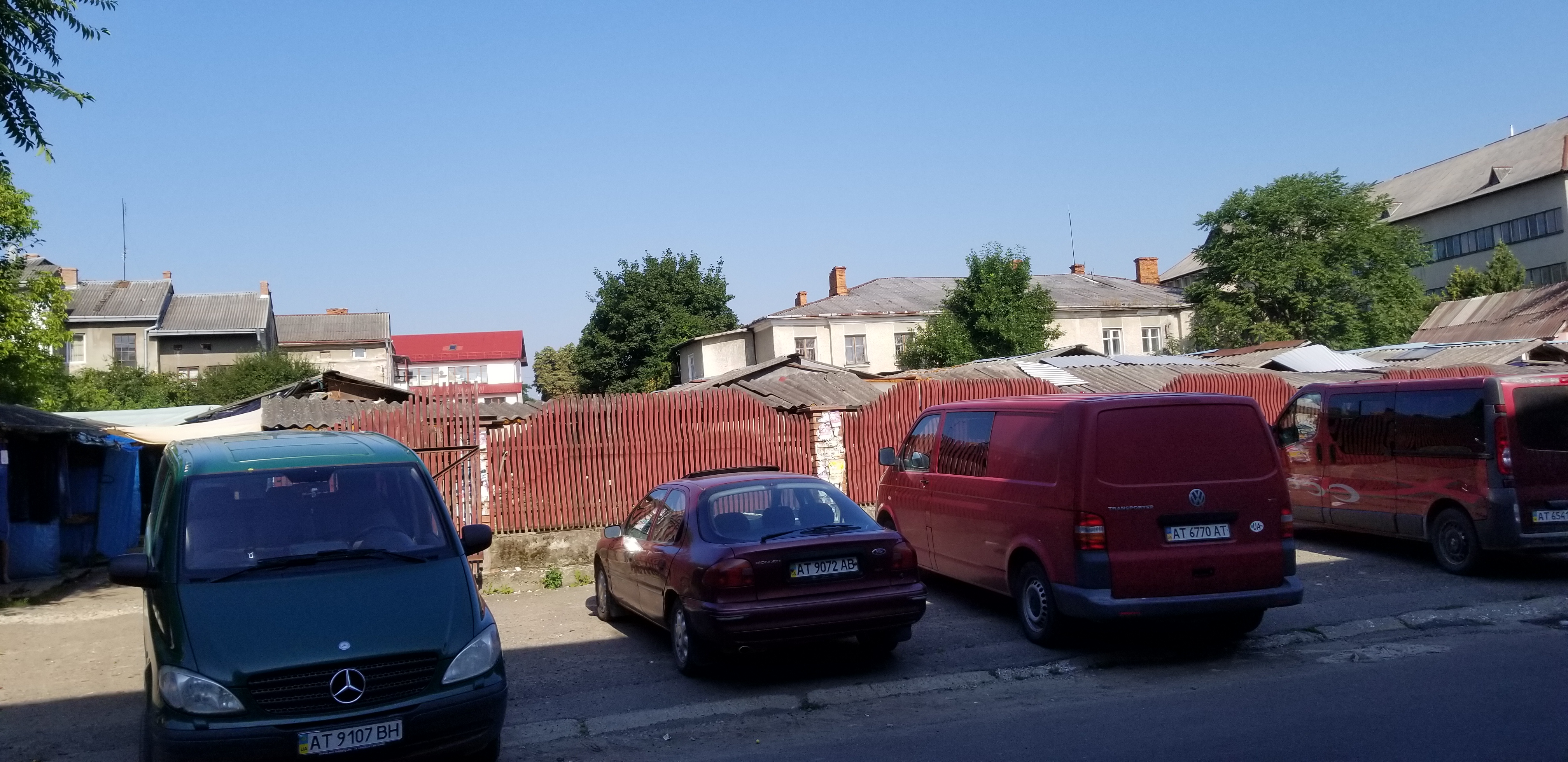 |
| Farmer's Market at the
former site of the Great Synagogue |
Former entrance to the Great Synagogue |
| View of the "Rynek," i.e. Town Square | This sign in the Town
Square reads "I love POKUTIA" |
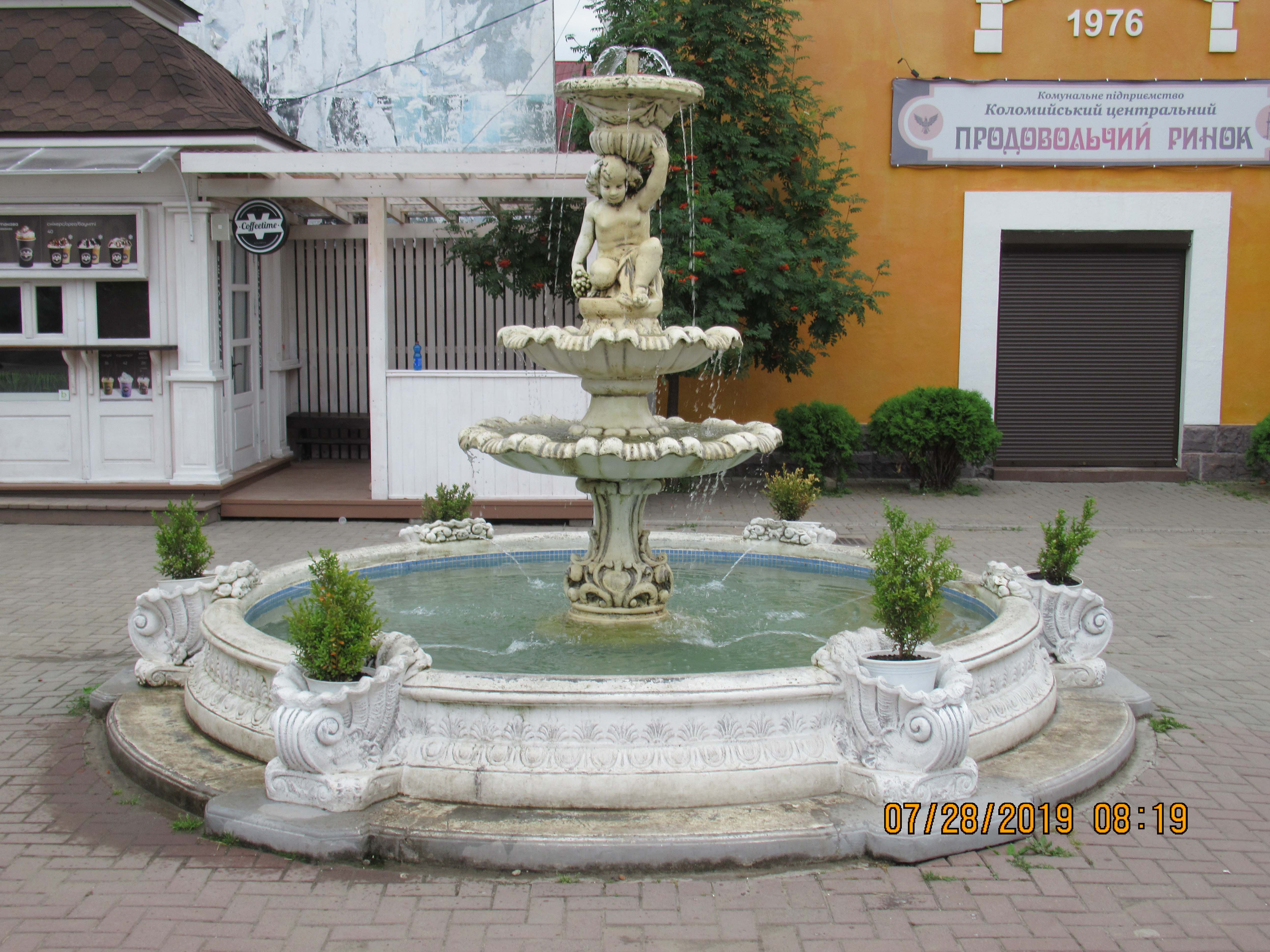 |
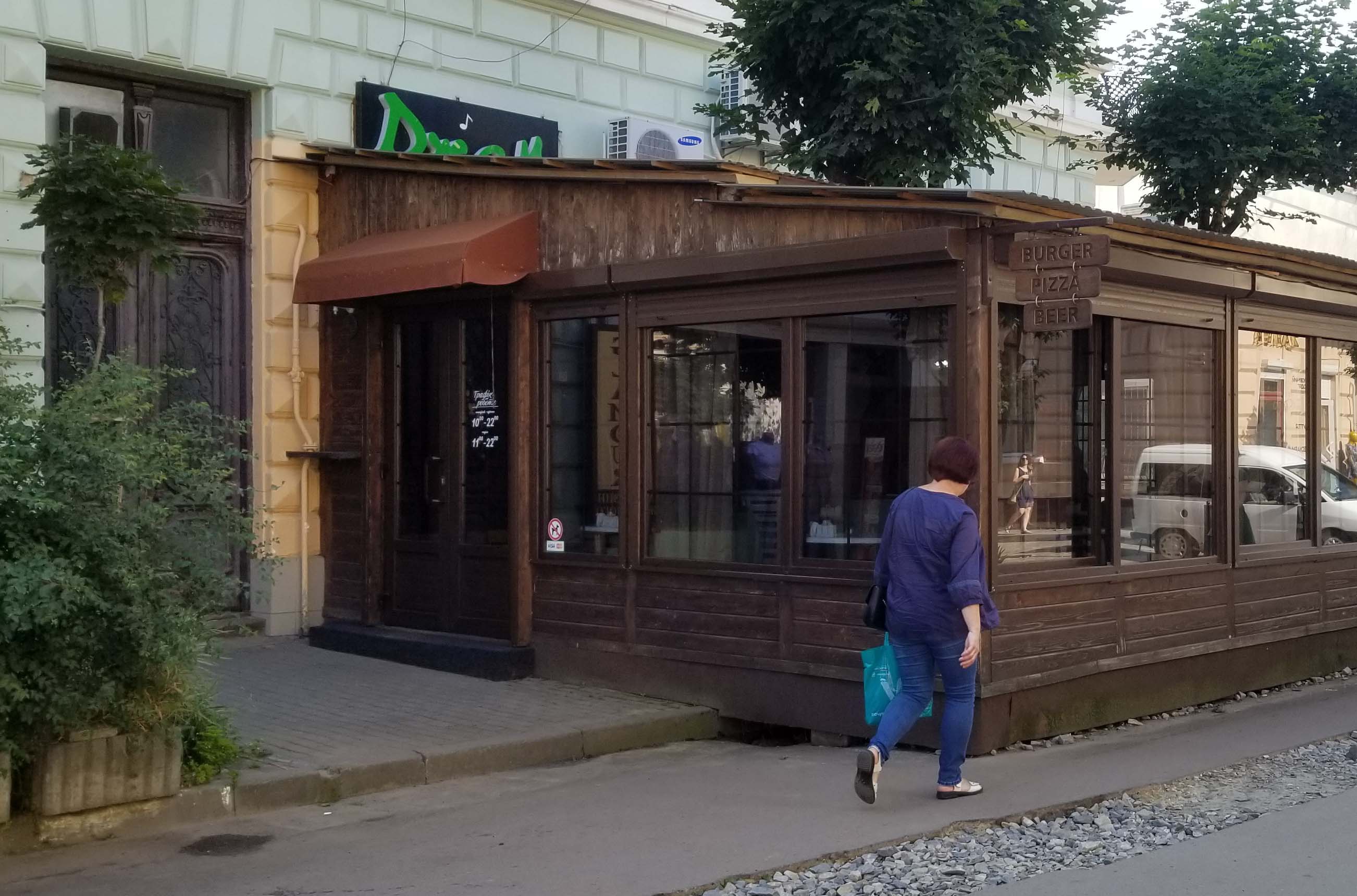 |
| Water fountain and statue in Renaissance Square, Northern end of Rynek | Restaurant advertising "Burger, Pizza,
Beer" |
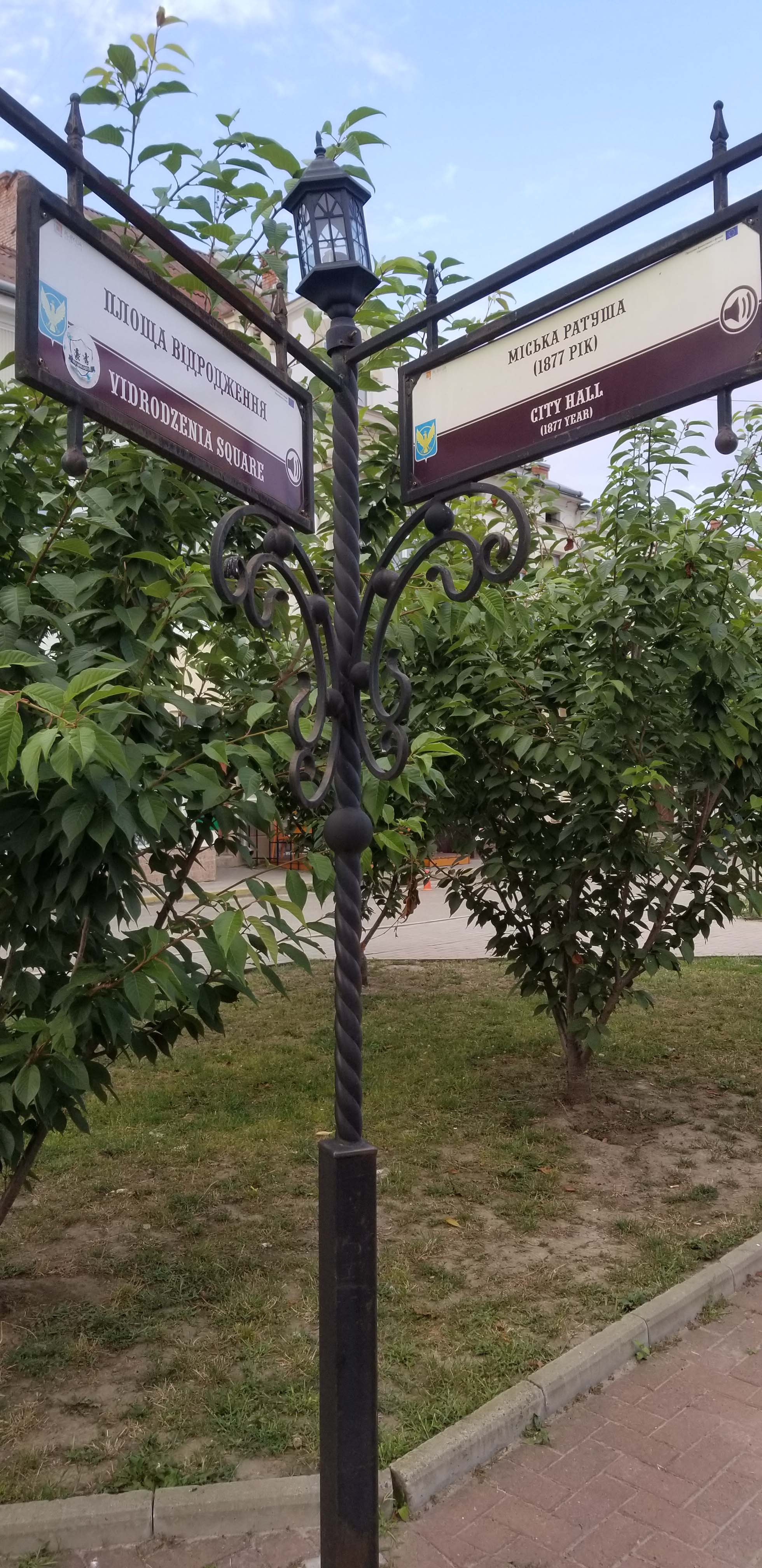 |
 |
 |
| Street sign at northern end of square.
One sign points to City Hall, built 1877, and the
other indicate you are standing in Vidrodzenia Square |
Abstract statue of two Ukranian women
holding a baby. Part of Renaissance Square. |
Statue of Ivano Franco, national poet
of Ukraine |
Jeff's family's story
Our travel agent had indicated some of the highlights in these towns and what was left of the Jewish presence after 1945, but this just scratched the surface. We chose these towns because they are where my family is from. My father’s father’s father – my great grandfather—and his seven siblings. Joseph (or Yosef or Yosel) Ausfresser left Kolomyia (Kolomea at that time) in 1902, settled in the lower East Side of NY, and remained there his entire life, passing away in 1968 at the age of 86. Over the 6 months prior to the trip I found several items that helped create the itinerary. I knew my great grandfather’s father (my 2x great grandfather) was born in Horodenka in 1859. I learned my 2x great grandfather had then moved to Iwanowce (8 km west of Kolomyia) by 1884 because my great grandfather’s younger sister, Sosia, was born there, according to her birth record. I surmised (because the evidence has not been found yet) that he moved there in 1875 to marry his cousin Devora because that is when the first child, Chaya, was born. Devora Gerstenhaber’s family came from Iwanowce. I learned the family moved to Chocimierz by 1893 because another sister, Rifcia, was born there that year. I knew my great grandfather’s older brother, Marcus, had lived at 100 Sobeskiego Street in Kolomyia in 1918 because of a story written by my father’s second cousin for a school assignment. I knew my great grandfather was connected to Obertyn because he is buried in the Obertyner section of Mt. Zion and attended services at Anshe Obertyne in the Lower East Side, where his brother, Marcus, became the Rabbi (and where my father had his bar mitzvah). These were some of the facts I had discovered over the years and during a more intensive investigation leading up to the trip.We chose to center our trip around Kolomyia. When we first started planning, I thought Joseph was born in Kolomyia, grew up in Kolomyia and left from Kolomyia. All his immigration documents say “Kolomea” – the ships manifest, his declaration to become a citizen, his draft registration and the various documents for his brothers. As I dug deeper into the metrical records housed in AGAD I discovered connections to Iwanowce (now Ivanivtsi) and Chocimierz (now Khotymyr), connections that indicate where he may have been born and where he grew up, but I never found a document that connected him directly to these places. These shtetls (both are small villages close to a larger city) were in the Kolomyia district at various times. It is probable that he chose to say Kolomyia the same way I would say New York or Long Island to people who don’t know the local geography.
Even though he may not have been born or grow up in Kolomyia, it was still central to nearly everything he and his family did. Some members of the extended family probably lived in Kolomyia while he was still in Galicia, as they clearly did after he left (a brother and sister had Kolomyia addresses between 1915 and 1918). Also, he must have spent significant time in Kolomyia, either working or going to the market or for entertainment. Kolomyia was the hub for all the towns in the region.
So, it made sense to stay there and focus our attention on Kolomyia. Being a city of nearly 60,000 people it had the best facilities of any town in the region except for Ivano Frankivsk. It was centrally located for all the towns we were visiting. It had a modest Jewish population and numerous historical sites. The only thing it lacked was specific reference points for my great-grandfather.
Traveling to Ukraine was surreal because it was hard to believe we were taking this trip. I had thought about coming here ever since I started seriously working on genealogy around 2013 and found the first document that said “Kolomea”. I had imagined I would do this journey in a few years after I had learned everything I could from the online records. I had not expected the opportunity would happen so soon. We were here because our son was fencing in the Maccabi games in Budapest. When I realized how close Budapest was to Kolomyia I started to investigate the possibility. I knew I would only have 2 or 3 days to spare and not sure this would be enough to do what I wanted. I asked other members of my genealogy groups if they had done this trip and was given the name of Sophia Kulich, a travel agent from Palm Beach, Florida, who was originally from Ukraine, and specialized in ancestry trips to the region. It was only after communicating with Sophia that I saw the trip as a reality.
In preparation I read whatever I could get my hands on about the region. I immediately found the Sefer Zikharon for Kolomyia and Horodenka. There are hundreds of pages for Kolomyia, but, unfortunately, it has not all been translated yet. I wanted to read what life was like in the late 19th century, while my great-grandfather was a teenager. The more I read the more I was connected to the events around World War II and the Shoah. There was no escaping that the Jewish history in the region, while going back as far as the 13th century, was dominated by what took place from 1941 to 1945, and secondarily, from 1945 to 1991 when the Soviets controlled the area. Article after article talked about death, humiliation, torture, and destruction. It became clear to me that our trip was going to be about much more than where my ancestors came from. The bulk of the family had left Austria-Hungary, and then Poland, by 1926. A few stayed, 2 sisters, some aunts and uncles, but I have no information on them after 1918.
As we entered Kolomyia, I was focused on 1902, the year my great-grandfather left. There was no way to anticipate the feeling of walking in the footsteps of my ancestors, streets that they walked on, sights they had seen. I could barely imagine the life they had in those towns. When I thought of what it must have been like I could only see Anetevka, the mythical shtetl where Tevye lived in “Fiddler on the Roof”. I could not fathom the feelings of being in a place where 95% of the Jewish population was annihilated in the years 1941 to 1945, and where most of the remainder left after 1945. Of course, I knew the history of these towns from my readings. What I did not realize was the effect this was going to have on my wife who had not done the same reading as me. She was not prepared for the stories of roundups, mass shootings and other depravity that took place during the Shoah that we would hear over and over in our three days. What made it so overwhelming for both us was what was missing, the lack of a Jewish presence in these towns that were, at their height, nearly 50% Jewish. No Jews remain in Horodenka, Obertyn, Khotymyr and Ivanivtsi. These are wholly Ukrainian villages. In Kolomyia, a town that once had nearly 30,000 Jews, 81 remain and it is shrinking year after year. But that is all part of another story that comes after our 3 days. For now, I want to focus on what we found during our visit to Kolomyia.
We spent 2 nights in Kolomyia. The first day we did our tour of Kolomyia. The second day we visited Horodenka, Obertyn, Khotymry and Ivanivtsi. In Kolomyia, Khotymyr and Ivanivsti I got to see places where my ancestors lived from 1880 to 1920, including the property for my Great Grandfather in Khotymyr.
Our last day was spent in Ivano Frankivsk. We met with Rabbi Kolesnik. We took pictures of 300 pages of documents from the various towns.
